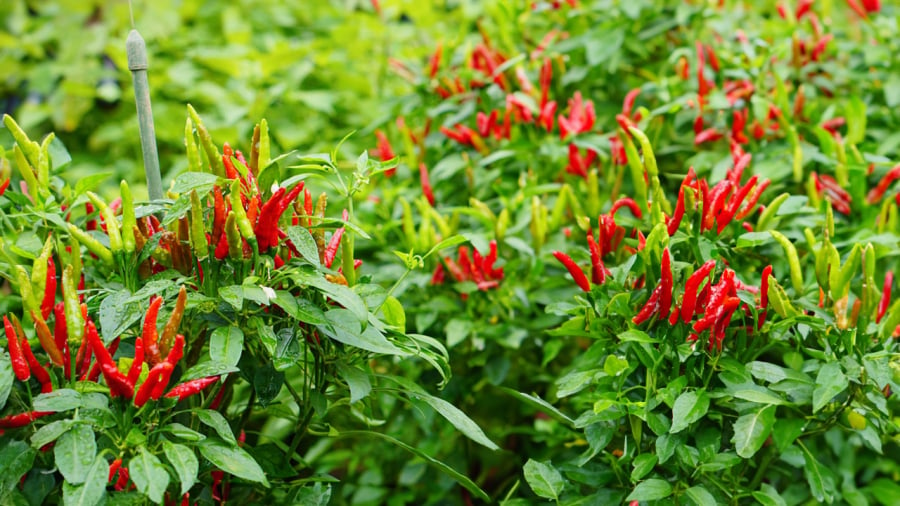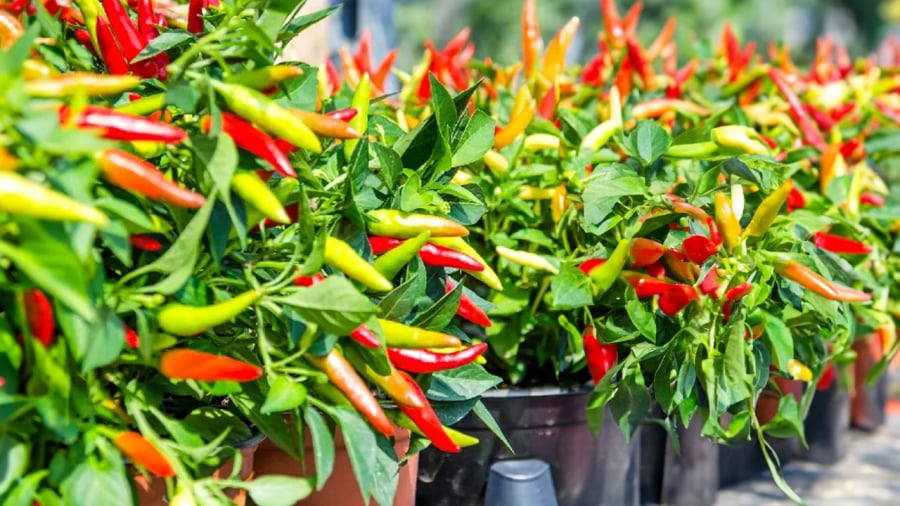Chili pepper is a type of plant that originated from the Americas. Nowadays, it is grown all over the world and used as a spice in many dishes. There are various types of chili pepper, each with its own level of spiciness.
In addition to its culinary uses, chili pepper can also be used as a medicinal herb and has many health benefits. It can boost immunity, aid in weight loss, improve taste perception, and treat colds and flu.
Chili pepper is an easy plant to grow. You can grow chili pepper plants in your garden or in pots for both decorative purposes and to harvest the fruits.
When growing chili pepper at home and aiming for a good yield, you can follow these tips:
Fertilize the soil before planting

To promote the healthy growth of chili pepper plants, it is important to fertilize the soil. When the soil has enough nutrients, the plants will grow quickly. You can use various types of fertilizers such as chicken manure, cow manure, or vegetable compost.
Place the fertilizers in the pot, then add soil and plant the chili pepper on top.
Use a booster for the chili pepper plants
Once the plants have matured and started to flower, you can use a booster to encourage fruiting. You can use readily available materials at home such as organic fertilizer, rice water, or eggshells. This will help the plants produce more fruits.
Other considerations when growing chili pepper

To ensure the health and productivity of chili pepper plants, it is important to pay attention to their growing conditions.
Chili pepper plants prefer light, well-drained soil. They do not like waterlogged soil as it can cause root rot and damage the plants. In temperatures ranging from 25-30 degrees Celsius, chili pepper plants germinate exceptionally well. However, these plants have a low tolerance for drought and require regular watering, but only in moderate amounts to avoid overwatering.
The plants also need natural sunlight for optimal growth, so it is recommended to place them in areas with plenty of sunlight.
To increase fruit production, you can manually pollinate the flowers when they bloom.
When chili pepper plants reach a height of around 20-25cm, you can prune some of the branches to maintain a tidy appearance and encourage more fruiting.
After harvesting the fruits, you can apply fertilizer and water to the plants to encourage the next round of fruiting.



































